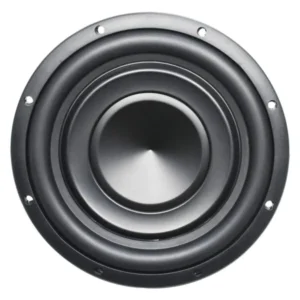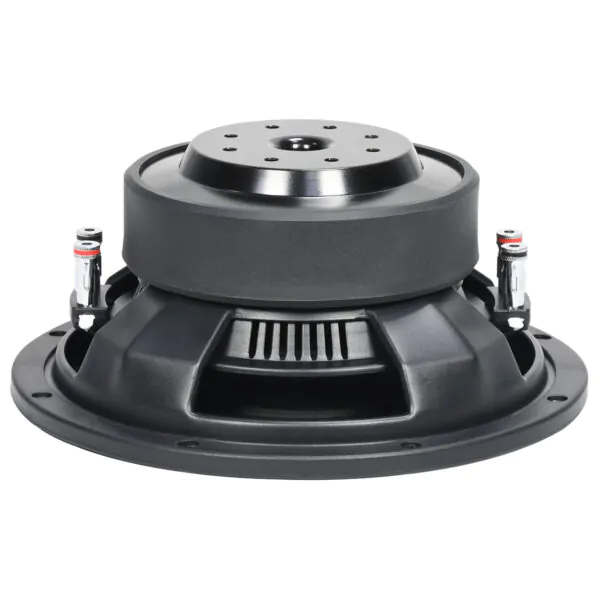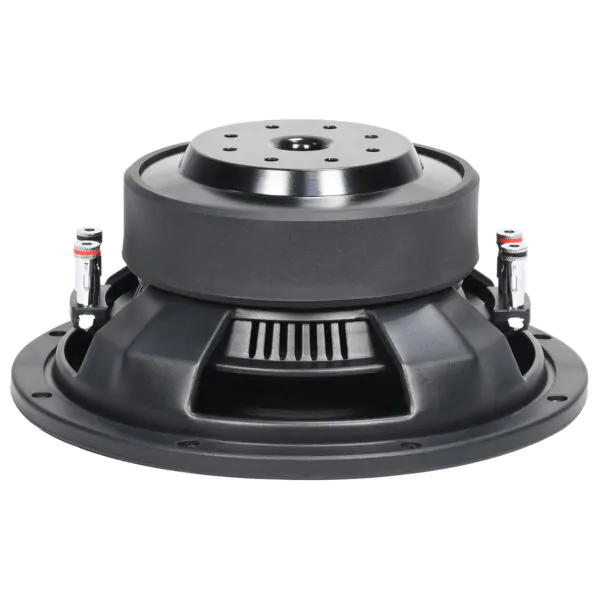When you step into your vehicle and turn on your audio system, you may notice that the mid-range and treble frequencies are handled fairly well by the standard speakers. But what about those deep lows, the rumble, the foundation of the music? That’s where a car subwoofer comes into its own. In this article for the website audioyong.com, we will examine what a car subwoofer is, how it works, and why it matters in the context of automotive audio systems—particularly for users in mechanical-manufacturing service environments who deal with installation, speaker enclosures, and tuning of vehicle sound systems.
Introduction: the role of a car subwoofer in automotive audio
 85
85
In any well-designed vehicle sound system there must be a way to reproduce the full range of audio frequencies—highs, mids and lows. Without proper low-frequency reproduction, the system loses impact, depth and emotional resonance. Essentially, a car subwoofer is a speaker driver and enclosure specifically dedicated to producing low-frequency (bass and sub-bass) sound that standard speakers struggle to reproduce.
In the first 100 words of this article you will find our main keyword, and it appears naturally. From a value-perspective, if your mechanical manufacturing service involves providing or installing car audio systems—such as speaker assembly, wiring, enclosures—then understanding what a car subwoofer does offers concrete benefit: stronger audio performance, more satisfied customers, fewer warranty or distortion issues, and smoother integration with other speaker components.
What is a car subwoofer and how does it differ from regular speakers?
A car subwoofer is not simply a larger speaker; it is a component engineered to extend low-frequency reproduction beyond what typical door speakers, mid-woofers or tweeters deliver. Technically, a “subwoofer” is a loudspeaker driver designed to reproduce frequencies lower than those which can be efficiently generated by a standard woofer.
In the car audio context, this means reproducing bass frequencies roughly in the 20 Hz–200 Hz range or so—though practical car subwoofers might focus on 30-120 Hz, depending on enclosure and vehicle constraints.
Here are a few of the key distinctions:
Standard speakers (mid and tweeters) are optimized for clarity, voice, instruments and higher frequency range; they are not suited to “feel-it” bass.
A car subwoofer uses a larger driver diameter, heavier magnet and voice coil, and often mounts in a dedicated enclosure to manage air movement and control resonance.
Because low frequencies are less directional (you feel more than pinpoint them), placement, enclosure design, and mounting become critical in a vehicle environment.
From the mechanical manufacturing and service perspective, that means when you specify or install a subwoofer system you must treat it as a subsystem: select driver size, enclosure type, amplifier matching, wiring gauge, mounting depth and vehicle space all matter.
Key features and mechanical considerations of a car subwoofer
When evaluating or implementing a car subwoofer system, several mechanical and acoustic features stand out. Understanding them helps ensure that the system delivers real value rather than just louder boom for the sake of it.
Driver size and excursion
Larger driver diameters (commonly 10″, 12″ in car applications) allow greater air movement and thus deeper bass, but they often require more space and may have lower sensitivity. From a manufacturing viewpoint, you’ll need to check mounting depth, box space and compatibility with vehicle structure.
Power handling and RMS rating
It is vital to match the amplifier to the subwoofer’s continuous (RMS) rating rather than just peak numbers. Many sub-woofer guides emphasise RMS rather than peak because continuous power defines real durability and sound reliability. In practice, the installer or service provider must ensure the amplifier, wiring and power supply are sized appropriately, especially in a car where voltage fluctuations occur.
Sensitivity and impedance
Sensitivity (dB/W/m) regulates how loud a subwoofer will play with a given power. Lower sensitivity means more power is needed. Impedance (commonly 4 Ω, 2 Ω or dual voice coil options) affects how you wire and match it with the amplifier. From a service standpoint, ensure that wiring harnesses, amplifier channels and subwoofer specifications are all compatible and that you are not driving the system into clipping or distortion.
Enclosure design (sealed vs ported vs band-pass)
The enclosure types significantly affect performance and mechanical integration:
Sealed box: offers tighter, more accurate bass; smaller size but less “boom”.
Ported or vented box: provides more output at lower frequencies; bigger size, more complexity.
Band-pass or custom enclosures: advanced design, often used by serious car audio systems for maximum output.
From a manufacturing perspective, designing or selecting the correct enclosure is as important as picking the driver. Mis-matched enclosures can lead to distorted bass, rattles, loss of fidelity or even vehicle panel damage.
Mounting depth and fitment
Vehicles often impose space constraints. The subwoofer must fit the trunk, under-seat area or custom enclosure location. “Shallow mount” subwoofers are a solution when depth is limited. Service providers must measure carefully, consider cabinet bracing (to avoid vibration) and ensure safe mounting to avoid hazards during driving.
Integration with the system (crossover, wiring, amplifier)
A well-implemented car subwoofer doesn’t work in isolation. It must integrate with the rest of the speaker system and the head unit or amplifier. That means setting proper crossover frequencies (so the sub only plays the lows, and the mids/tweeters handle the rest), ensuring wiring is routed correctly, avoiding ground loops, and calibrating gain and phase.
From a mechanical/service standpoint, wiring gauge, fuse protection, remote turn-on wiring, and safe routing under seats or along vehicle structure are all critical to reliability and serviceability.
Why a car subwoofer matters for vehicle audio experiences
For users in the mechanical manufacturing or service space—who may be specifying, installing, or maintaining car audio systems—the value of adding a dedicated car subwoofer can be summarised in several practical benefits:
Enhanced musical realism and emotional impact: without a subwoofer, the system may feel top-heavy or lacking foundation. The bass gives body to music, movies or even navigation tones; it completes the audio image.
Relieves standard speakers and improves life span: when a subwoofer handles the low-frequency load, the mid-range speakers don’t have to work as hard. This can reduce distortion, overheating and failure in factory speakers.
Customisation and differentiation in service offerings: from a business perspective, offering subwoofer upgrades or proper integration can add value for clients, raise perceived quality, and differentiate your manufacturing or installation service from basic audio swap-outs.
Controlled vibration and structural reliability: a properly designed and mounted subwoofer system avoids unintended rattles, panel resonance or damage to vehicle trim. For a manufacturing/service workflow this means fewer callbacks, better user satisfaction and reputation.
Increased market for aftermarket accessories and enclosure design: manufacturing services that build custom enclosures, brackets or mounting solutions can capitalise on the subwoofer market—from under-seat shallow boxes to precision-fit cabinets for specific vehicles.
In essence, adding a car subwoofer correctly gives you more than louder bass; it gives you higher fidelity, better system balance and a more compelling product offering for your customers.
Common pitfalls, best practices and value-adding advice
Even the best-intended subwoofer installation can go wrong if mechanical or acoustic factors are overlooked. Here are several deeper reflections and tips—especially relevant to manufacturing and service professionals.
Avoid mismatched power and driver ratings
If the amplifier output far exceeds the subwoofer’s RMS rating, you risk driver damage. Conversely, under-powered systems will distort and perform poorly. Ensure amplifier and subwoofer are well matched, including wiring impedance.
Evaluate enclosure volume and fitment carefully
A subwoofer driver must be installed in an enclosure volume that matches its design specifications; too small or too large can degrade performance. The enclosure must also be anchored to the vehicle structure and braced appropriately to handle high excursion. This is a mechanical fabrication challenge and must be treated in your service workflow.
Consider vehicle electrical system and wiring
High-performance bass draws substantial current. Ensure wiring from the battery to the amplifier is of sufficient gauge, include fuse protection, and route wires safely away from heat or moving parts. Failure to do so may lead to voltage drop, dimming lights, overheating or even fire risk.
Manage enclosure vibration and vehicle panel interaction
When a subwoofer pushes air, the vehicle’s panels, trim, glass and structure can rattle or resonate. Part of the service value you provide is ensuring these surfaces are damped, mounts are secure, and enclosures are isolated if necessary. Rattles destroy perceived quality even if the subwoofer itself is excellent.
Integrate thoughtfully with the rest of the audio system
Ensure that the crossover frequency, phase alignment and gain structure are optimised. For example, if the subwoofer is set too high a frequency, it may be localizable and degrade staging. If its phase is out of alignment with mid speakers, bass may cancel out in certain positions. From an engineering standpoint, your service must include tuning and listening tests, not just physical installation.
Educate your customer / end user
Often users don’t understand what a subwoofer “should” do, so manage expectations. Explain that deeper bass may sacrifice trunk space or require trade-offs. Advise on volume limits and safe usage so that they enjoy the system without damage.
Application scenarios in mechanical manufacturing and car-audio service
Let’s consider specific scenarios where a service provider or manufacturing partner could add value using a car subwoofer:
Custom enclosure fabrication: For a particular vehicle model, you may build a tailored MDF or fiberglass box that fits precisely in the trunk or under the seat, taking into account mounting depth, volume, panel clearance and electrical access.
Wiring harness production: You might supply a kit that includes high-gauge power cable, fused distribution block, remote turn-on lead, RCA leads, and manufacturer-specific plug connectors, enabling faster installation at the automotive workshop.
Installation service: You may offer turn-key installation of subwoofer, amplifier, enclosure, wiring, tuning, and vibration mitigation (e.g., panel damping). That elevates you from commodity speaker installers to a full system integrator.
After-sales tuning and support: Provide calibration service—using test tones, SPL meters, or listening sessions—to ensure the subwoofer integrates seamlessly with the rest of the system and performs reliably under driving conditions (engine noise, road vibration, temperature variation).
Retrofit upgrade offering: Many vehicles come with weak factory systems. Offering a subwoofer upgrade kit can command higher margins and deliver measurable audio improvement for end users.
In each scenario, the core component is the car subwoofer, but the real value comes from the mechanical, electrical and acoustic integration—the discipline you bring as a manufacturing or service professional.
Conclusion
In summary, a properly selected and installed car subwoofer can transform a vehicle’s audio experience. For those in mechanical manufacturing and service of car audio systems, focusing on subwoofer integration offers tangible business, technical, and customer-satisfaction benefits. The key pillars are: choosing the right driver size, matching amplifier power, designing/fitment of enclosure, wiring and vehicle electrical readiness, panel vibration control, and system tuning. If these are addressed comprehensively, your installation will not only deliver deep and accurate bass—but also reliability, professionalism and real value to the end user.
By treating the subwoofer subsystem with the same engineering rigour as other vehicle mechanical systems—mounting, vibration control, wiring integrity, fitment, safety—you ensure that your audio offering stands out and delivers in real-world applications.
FAQ
Q1: Do I absolutely need a subwoofer in a car audio system?
A1: Technically you may operate without one, but without a subwoofer the system will lack low-frequency extension and impact. The music may sound thin or top-heavy. A subwoofer brings the full frequency spectrum into play and is strongly recommended for serious audio system upgrades.
Q2: What size driver should I pick for my vehicle?
A2: It depends on your space, budget and sound preference. 10″ or 12″ are common in car audio due to their balanced size and bass potential. Larger drivers may offer deeper lows but need more power and space.
Q3: Does the enclosure type matter?
A3: Yes. A sealed enclosure yields tighter, more accurate bass. A ported enclosure offers more output and “boom”. The choice depends on your musical taste, vehicle space and design goal.
Q4: How do I ensure the subwoofer is properly mounted in the vehicle?
A4: Measure depth, secure the enclosure to the vehicle structure, brace it if needed, manage wiring and ensure ventilation for the amplifier. Also treat adjacent panels for vibration control. Failing to do so can lead to rattles, distortion or structural issues.
Q5: Can I just rely on factory speaker upgrades and skip the subwoofer?
A5: Factory upgrades may improve clarity and mid-range, but they typically cannot reproduce very low frequencies effectively. A dedicated subwoofer system remains the most efficient way to handle bass, rather than expecting standard speakers to do everything.






Somebody necessarily lend a hand to make seriously posts I might state. This is the first time I frequented your web page and to this point? I amazed with the analysis you made to create this particular put up incredible. Wonderful activity!
When I originally commented I clicked the -Notify me when new comments are added- checkbox and now every time a comment is added I get 4 emails with the same comment. Is there any method you may take away me from that service? Thanks!
I just like the helpful information you supply to your articles. I’ll bookmark your blog and take a look at once more here frequently. I am quite sure I will learn plenty of new stuff proper here! Best of luck for the following!
Can you be more specific about the content of your article? After reading it, I still have some doubts. Hope you can help me. https://www.binance.com/register?ref=IXBIAFVY
Hi there! This is my 1st comment here so I just wanted to give a quick shout out and tell you I really enjoy reading your blog posts. Can you suggest any other blogs/websites/forums that go over the same topics? Thank you so much!